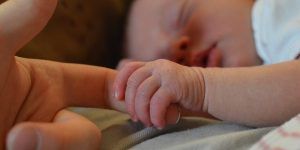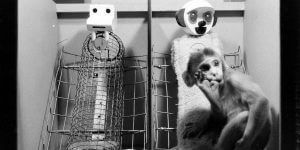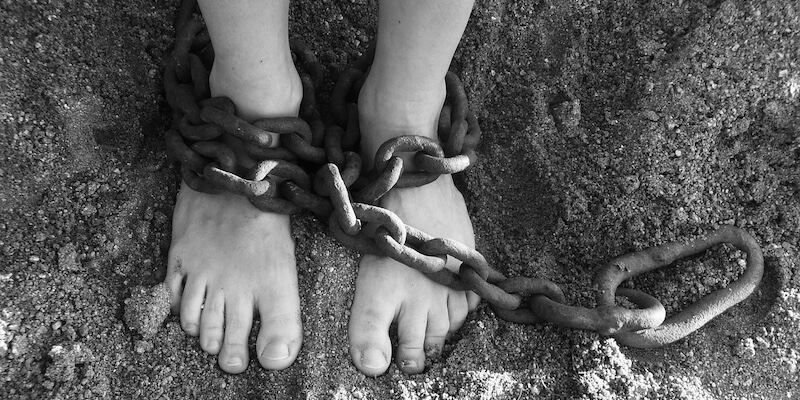Harlow’s Monkey Experiments: 3 Findings About Attachment
 Attachment theory refers to the idea that an infant is born with the biological need to have contact with their primary caregiver in the first few months of their life (Colman, 2001).
Attachment theory refers to the idea that an infant is born with the biological need to have contact with their primary caregiver in the first few months of their life (Colman, 2001).
When that need is met, the infant develops a secure attachment style; however, when that need is not met, the infant can develop an attachment disorder.
In this post, we’ll briefly explore attachment theory by looking at Harlow’s monkey experiments and how those findings relate to human behavior and attachment styles. We’ll also look at some of the broader research that resulted from Harlow’s experiments.
Before we begin, I have to warn you that Harlow’s experiments are distressing and can be upsetting. Nowadays, his experiments are considered unethical and would most likely not satisfy the requirements of an ethical board. However, knowing this, the findings of his research do provide insight into the important mammalian bond that exists between infant and parent.
Before you continue, we thought you might like to download our three Positive Relationships Exercises for free. These detailed, science-based exercises will help you or your clients build healthy, life-enriching relationships.
This Article Contains:
- Harlow’s Experiments: A Brief Summary
- Three Fascinating Findings & Their Implications
- Its Connection to Love and Attachment Theory
- Follow-Up and Related Experiments
- Criticisms of Harlow’s Experiments
- Ethical Considerations of Harlow’s Experiments
- Relevant PositivePsychology.com Resources
- A Take-Home Message
- References
Harlow’s Experiments: A Brief Summary
Harry Harlow was trained as a psychologist, and in 1930 he was employed at the University of Wisconsin–Madison. His areas of expertise were in infant–caregiver relationships, infant dependency and infant needs, and social deprivation and isolation. He is also well known for his research using rhesus monkeys.
Maternal surrogates: Food versus comfort
For his experiments, Harlow (1958) separated infant rhesus monkeys from their mothers. He then constructed two surrogate ‘mothers’ for the infants: one surrogate made out of metal but that provided milk through an artificial nipple, the other surrogate covered in soft, fluffy material but that didn’t offer food.
The first surrogate delivered food but provided no comfort; the second did not deliver food, but the rhesus infants were able to cuddle with it.
When both surrogates were placed in the infants’ cages, Harlow found the surrogates satisfied different needs of the rhesus infants. The wire surrogate satisfied the infants’ primary need for food. However, when Harlow made a loud noise to frighten the rhesus infants, they ran to the second, fluffy surrogate for comfort.
Maternal surrogates: A secure base from which to explore
In subsequent experiments, Harlow (1958) showed that the fluffy surrogate acted as a secure base from which rhesus infants could explore an unfamiliar environment or objects. In these experiments, the infants, along with their fluffy surrogates, were placed in an unfamiliar environment like a new cage.
These infants would explore the environment and return to the surrogate for comfort if startled. In contrast, when the infants were placed in the new environment without a surrogate, they would not explore but rather lie on the floor, paralyzed, rocking back and forth, sucking their thumbs.
The absence of a maternal surrogate
Harlow also studied the development of rhesus monkeys that were not exposed to a fluffy surrogate or had no surrogate at all. The outcome for these infants was extremely negative. Rhesus infants raised with a milk-supplying metal surrogate had softer feces than infants raised with a milk-supplying fluffy surrogate.
Harlow posited that the infants with the metal surrogates suffered from psychological disturbances, which manifested in digestive problems.
Rhesus infants raised with no surrogates showed the same fearful behavior when placed in an unfamiliar environment as described above, except that their behavior persisted even when a surrogate was placed in the environment with them. They also demonstrated less exploratory behavior and less curiosity than infants raised with surrogates from a younger age.
When these infants were approximately a year old, they were introduced to a surrogate. In response, they behaved fearfully and violently. They would rock continuously, scream, and attempt to escape their cages. Fortunately, these behaviors dissipated after a few days. The infants approached, explored, and clung to the surrogate, but never to the same extent as infants raised with a fluffy surrogate from a younger age.
Three Fascinating Findings & Their Implications

Primary drives are ones that ensure a creature’s survival, such as the need for food or water. Harlow suggests that there is another drive, ‘contact comfort,’ which the fluffy surrogate satisfied.
The ‘contact comfort’ drive does more than just satisfy a need for love and comfort. From Harlow’s experiments, it seems that these fluffy surrogates offered a secure, comforting base from which infants felt confident enough to explore unfamiliar environments and objects, and to cope with scary sounds.
Conclusions from Harlow’s work were limited to the role of maternal surrogates because the surrogates also provided milk – a function that only female mammals can perform. Consequently, it was posited that human infants have a strong need to form an attachment to a maternal caregiver (Bowlby, 1951). However, subsequent research has shown that human infants do not only form an attachment with:
- a female caregiver,
- a caregiver that produces milk, or
- one caregiver (Schaffer & Emerson, 1964).
The bond between human infant and caregiver is not limited to only mothers, but can extend to anyone who spends time with the infant. Schaffer and Emerson (1964) studied the emotional responses of 60 infants to better understand their attachments and behaviors.
They found that at the start of the study, most of the infants had formed an attachment with a single person, normally the mother (71%), and that just over a third of the infants had formed attachments to multiple people, sometimes over five.
However, when the infants were 18 months, only 13% had an attachment to a single person, and most of the infants had two or more attachments. The other people with whom infants formed an attachment included:
- Fathers
- Grandparents
- Siblings and family members
- People who were not part of their family, including neighbors or other children
Its Connection to Love and Attachment Theory
Harlow’s experiment on rhesus monkeys shed light on the importance of the relationship between caregiver and infant. This relationship satisfies other needs besides food and thirst, and the behavior of rhesus infants differs depending on whether they were raised (1) with or without a surrogate and (2) whether that surrogate was a fluffy (i.e., comforting) or metal (i.e., non-comforting) one.
Widespread thinking at the time was that children only needed their physical needs to be satisfied in order to grow up into healthy, well-adjusted adults (Bowlby, 1951, 1958). Harlow’s work, however, suggests that the caregiver satisfies another need of the infant: the need for love.
It is difficult to know whether the infant monkeys truly loved the surrogate mothers because Harlow could not ask them directly or measure the feeling of love using equipment.
But there is no doubt that the presence (or absence) of a surrogate mother deeply affected the behavior of the infant monkeys, and monkeys with surrogate mothers displayed more normal behavior than those without.
Additionally, Harlow’s work also showed that infant monkeys looked for comfort in the fluffy surrogate mother, even if that surrogate mother never provided food.
From this research, we can conclude that infants feel an attachment toward their caregiver. That attachment is experienced as what we know to be ‘love.’ This attachment seems to be important for a variety of reasons, such as:
- Feeling safe when afraid or in an unfamiliar environment
- Responding in a loving, comforting way to the needs and feelings of infants
The infant’s need to form an attachment was not considered a primary need until 1952, when Bowlby argued that this basic need was one that infants feel instinctually (Bowlby & World Health Organization, 1952).
Bowlby’s work formed the basis of attachment theory – the theory that the relationship between infant and caregiver affects the infant’s psychological development.
Follow-Up and Related Experiments

The contributions from these researchers include:
- The emotional needs of infants are critical to healthy development and survival
- Parents play an important role besides merely satisfying the physical needs of an infant to ensure survival
Maternal deprivation
John Bowlby (1958) argued that maternal deprivation has extremely negative effects on the psychological and emotional development of children.
He was especially interested in extreme forms of parental deprivation, such as children who were homeless, abandoned, or institutionalized and therefore had no contact with their parents.
From his research, Bowlby argued that satisfying the physiological needs of the child did not ensure healthy development and that the effects of maternal deprivation were grave and difficult to reverse.
Specifically, he argued that how the caregiver behaves in response to the behavior and feelings of an infant plays an important role in infants’ psychological and emotional development (Bowlby, 1958).
Attachment styles in infants
How the caregiver responds to the infant is known as sensitive responsiveness (Ainsworth et al., 1978). The fluffy surrogate mothers in Harlow’s experiment were not responsive, obviously; however, their presence, the material used to cover them, and their shape allowed the rhesus infants to cling to them, providing comfort, albeit a basic, unresponsive one.
The findings from research by Harlow and Bowlby led to pioneering work by Mary Ainsworth on infant–mother attachments and attachment theory in infants. Specifically, she developed an alternative method to study child–parent attachments, using the ‘strange situation procedure’:
- The parent and child are placed together in an unfamiliar room.
- At some point, a (female) stranger enters the room, chats to the parent and plays with/chats to the infant.
- The parent leaves the room, and the child and stranger are alone together.
- The parent returns to the room, and the stranger leaves. The parent chats and plays with the child.
- The parent leaves the room, and the child is alone.
- The stranger returns and tries to chat and play with the child.
- The parent returns to the room, and the stranger leaves. The parent chats and plays with the child.
Depending on how the child behaved at the separation and introduction of the parent and the stranger, respectively, the attachment style between the infant and mother was classified as either secure, anxious-avoidant, or anxious-resistant.
For more reading on Mary Ainsworth, Harlow, and Bowlby, you can find out more about their work in our What is Attachment Theory? article.
Harlow’s studies on dependency in monkeys – Michael Baker
Criticisms of Harlow’s Experiments
Subsequent research has questioned some of Harlow’s original findings and theories (Rutter, 1979). Some of these criticisms include:
- Harlow’s emphasis on the importance of a single, maternal figure in the child–parent relationship. As mentioned earlier, children can develop important relationships with different caregivers who do not need to be female/maternal figures (Schaffer & Emerson, 1964).
- The difference between a bond and an attachment. Children can form attachments without forming bonds. For example, a child might follow a teacher (i.e., an example of attachment behavior) and yet not have any deep bonds or relationships with other children. This suggests that these two types of relationships might be slightly different or governed by different processes.
- Other factors can also influence the relationship between child and parent, and their attachment. One such factor is the temperament of the parent or the child (Sroufe, 1985). For example, an anxious parent or child might show behavior that suggests an insecure attachment style. Another factor is that behaviors that suggest attachment do not necessarily mean that the parent is better responding to the child’s needs. For example, children are more likely to follow a parent when in an unfamiliar environment. This behavior does not automatically imply that the child’s behavior is a result of the way the parent has responded in the past; instead, this is just how children behave.
One of Harlow’s most controversial claims was that peers were an adequate substitute for maternal figures. Specifically, he argued that monkeys that were raised with other similarly aged monkeys behaved the same as monkeys that were raised with their parents. In other words, the relationship with a parent is not unique, and peers can meet these ‘parental’ needs.
However, subsequent research showed that rhesus monkeys raised with peers were shyer, explored less, and occupied lower roles in monkey hierarchies (Suomi, 2008; Bastian, Sponberg, Suomi, & Higley, 2002).
Importantly, Harlow’s experiments are not evidence that there should be no separation between parent and infant. Such a scenario would be almost impossible in a normal environment today. Frequent separations between parent and infant are normal; however, it is critical that the infant can re-establish contact with the parent.
If contact is successfully re-established, then the bond between parent and child is reinforced.
Impact on psychological theories about human behavior
Harlow’s research on rhesus monkeys demonstrated the important role that parents have in our development and that humans have other salient needs that must be met to achieve happiness.
Harlow’s work added weight to the arguments put forward by Sigmund Freud (2003) that our relationship with our parents can affect our psychological development and behavior later in our lives.
Harlow’s work also influenced research on human needs. For example, Maslow (1943) argued that humans have a hierarchy of needs that must be met in order to experience life satisfaction and happiness.
The first tier comprises physiological needs, such as hunger and thirst, followed by the second tier of needs such as having a secure place to live. The third tier describes feelings of love and belonging, such as having emotional bonds with other people. Maslow argued that self-actualization could only be reached when all of our needs were met.
Ethical Considerations of Harlow’s Experiments
Harlow continued to perform experiments on rhesus monkeys, including studying the effects of partial to complete social deprivation. It is highly unlikely that Harlow’s experiments would pass the rigorous requirements of any ethics committee today. The separation of an infant from their parent, especially intending to study the effect of this separation, would be considered cruel.
Kobak (2012) outlines the experiments performed by Harlow, and it is immediately obvious that many of these animals experienced severe emotional distress because of their living conditions.
In the partial isolation experiments, Harlow isolated a group of 56 monkeys from other monkeys; although they could hear and see the other monkeys, they were prevented from interacting with or touching them. These monkeys developed aggressive and severely disturbed behavior, such as staring into space, repetitive behaviors, and self-harm through chewing and tearing at their flesh.
Furthermore, the monkeys that were raised in isolation did not display normal mating behavior and failed in mating.
The complete social deprivation experiments were especially cruel. In these experiments, they raised the monkeys in a box, alone, with no sensory contact with other monkeys. They never saw, heard, or came into contact with any other monkeys.
The only contact that they had was with a human experimenter, but this was through a one-way screen and remote control; there was no visual input of another living creature.
Harlow described this experience as the ‘pit of despair.’ Monkeys raised in this condition for two years showed severely disturbed behavior, unable to interact with other monkeys, and efforts to reverse the effect of two years in isolation were unsuccessful.
Harlow considered this experiment as an analogy of what happens to children completely deprived of any social contact for the first few years of their lives.
The effects of Harlow’s experiments were not limited to only one generation of monkeys. In one of his studies, a set of rhesus monkeys raised with surrogates, rather than their own mothers, gave birth to their own infants.
Harlow observed that these parent-monkeys, which he termed ‘motherless monkeys,’ were dysfunctional parents. They either ignored their offspring or were extremely aggressive toward them. They raised two generations of monkeys to test the effect of parental deprivation.
Relevant PositivePsychology.com Resources
On a more positive note, you will find many tools at PositivePsychology.com to improve your client’s relationships. For example, Create a Connection Ritual can teach partners to develop meaningful daily rituals to improve communication.
Together, partners commit to participating in the behaviors that form each ritual. By actively engaging and reflecting on these behaviors, the bond is strengthened.
A second useful tool, appropriate for any relationship, is Blueprint For Love.
Your client can begin to understand what a loving relationship looks like to their partner, potentially making it easier for them to recognize what upsets or frustrates them. The aim of the exercise is to identify things that they could do more, or less of, in their relationship to strengthen it.
If you’re looking for more science-based ways to help others build healthy relationships, this collection contains 17 validated positive relationships tools for practitioners. Use them to help others form healthier, more nurturing, and life-enriching relationships.
A Take-Home Message
Harlow’s monkey experiments were cruel, but it would have been impossible to conduct the same experiments using human infants.
Furthermore, Harlow’s experiments helped shift attention to the important role that caregivers provide for children.
When Harlow was publishing his research, the medical fraternity believed that meeting the physical needs of children was enough to ensure a healthy child. In other words, if the child is fed, has water, and is kept warm and clean, then the child will develop into a healthy adult.
Harlow’s experiments showed that this advice was not true and that the emotional needs of infants are critical to healthy development.
With love, affection, and comfort, infants can develop into healthy adults.
We hope you enjoyed reading this article. Don’t forget to download our three Positive Relationships Exercises for free.
- Ainsworth, M. D. S., Blehar, M. C., Waters, E., & Wall, S. (1978). Patterns of attachment: A psychological study of the strange situation. Erlbaum.
- Bastian, M. L., Sponberg, A. C., Suomi, S. J., & Higley, J. D. (2002). Long-term effects of infant rearing condition on the acquisition of dominance rank in juvenile and adult rhesus macaques (Macaca mulatta). Developmental Psychobiology, 42, 44–51.
- Bowlby, J. (1951). Maternal care and mental health. Columbia University Press.
- Bowlby, J. (1958). The nature of the child’s tie to his mother. International Journal of Psycho-Analysis, 39, 350–373.
- Bowlby, J., & World Health Organization. (1952). Maternal care and mental health: A report prepared on behalf of the World Health Organization as a contribution to the United Nations programme for the welfare of homeless children. World Health Organization.
- Colman, M. A. (2001). Oxford dictionary of psychology. Oxford University Press.
- Freud, S. (2003). An outline of psychoanalysis. Penguin UK.
- Harlow, H. F. (1958). The nature of love. American Psychologist, 13(12), 673.
- Kobak, R. (2012). Attachment and early social deprivation: Revisiting Harlow’s monkey studies. Developmental psychology: Revisiting the classic studies, S, 10–23.
- Maslow, A. H. (1943). A theory of human motivation. Psychological Review, 50(4), 370–96.
- Rutter, M. (1979). Maternal deprivation, 1972–1978: New findings, new concepts, new approaches. Child Development, 50(2), 283–305.
- Schaffer, H. R., & Emerson, P. E. (1964). The development of social attachments in infancy. Monographs of the Society for Research in Child Development, 29(3), 1–77.
- Sroufe, L. A. (1985). Attachment classification from the perspective of infant-caregiver relationships and infant temperament. Child Development, 56(1), 1–14.
- Suomi, S. J. (2008). Attachment in rhesus monkeys. In J. Cassidy & P. Shaver (Eds.), Handbook of attachment: Theory, research and clinical applications (pp. 173–191). Guilford Press.
Let us know your thoughts
Read other articles by their category
- Body & Brain (49)
- Coaching & Application (57)
- Compassion (26)
- Counseling (51)
- Emotional Intelligence (24)
- Gratitude (18)
- Grief & Bereavement (21)
- Happiness & SWB (40)
- Meaning & Values (26)
- Meditation (20)
- Mindfulness (45)
- Motivation & Goals (45)
- Optimism & Mindset (34)
- Positive CBT (28)
- Positive Communication (20)
- Positive Education (47)
- Positive Emotions (32)
- Positive Leadership (18)
- Positive Parenting (3)
- Positive Psychology (33)
- Positive Workplace (37)
- Productivity (16)
- Relationships (46)
- Resilience & Coping (36)
- Self Awareness (21)
- Self Esteem (37)
- Strengths & Virtues (31)
- Stress & Burnout Prevention (34)
- Theory & Books (46)
- Therapy Exercises (37)
- Types of Therapy (64)





What our readers think
Parental attunement and attention also shape the architecture of the brain and the function of the nervous system. When a child does not encounter sufficient parental attunement, compassion, kindness, and empathy, they are deprived of experiences that foster the integration of the brain. This results in a dysregulated nervous system, which cannot produce regulated emotions, thoughts, behaviors, relationships, or bodily systems. The impeded integration causes internal distress, the symptoms of which include chronic illness, recurrent pain, poor relationships, and “mental health” conditions (which are health conditions).
The child (and subsequently insufficiently supported adult) tries to find relief through whatever means are available: numbing, acting out, withdrawing, overeating, substance abuse, dissociation, splitting, self-harm, etc. These are not “disorders” but *survival adaptations* demanded by the unsafe environment. The child/adult uses whatever survival adaptations are available; when they have better options, they use them.
When the dysregulated person receives sufficient psychosocial support, such as through truly therapeutic or other integrative relationships, the brain can integrate and the nervous system can regulate. People, like animals and plants, flourish in supportive environments. Fix the environment and the symptoms fade.
References cited, but not listed
Hi N,
If you scroll to the very end of the article, you will find a button that you can click to reveal the reference list.
Hope this helps!
– Nicole | Community Manager